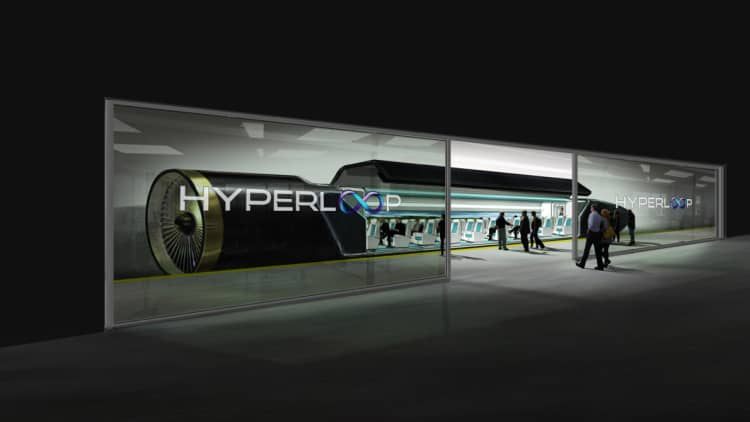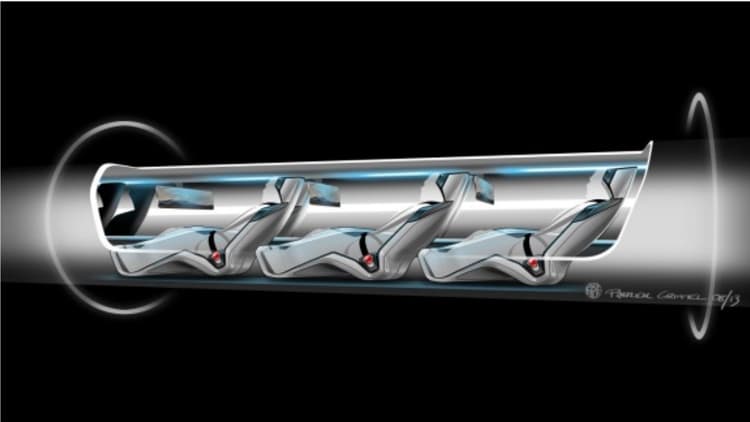


If the Hyperloop succeeds at sending people and cargo through tubes at up to 760 mph, one company says the capsules zipping along at close to the speed of sound should be smart enough to immediately detect any problems.
Hyperloop Transportation Technologies said Tuesday it will be able to make such detection a reality, thanks to a material known as vibranium.
What's vibranium? If you Google it, you'll find that it's a "precious extraterrestrial metal" that was used to make the shield of Marvel Comics' Captain America.
HTT calls its vibranium a smart material made of sensor-embedded carbon fiber that will wirelessly and instantly transmit critical information about the capsules' temperature, stability and integrity. Built in a dual-layer sandwich formation, the capsules' vibranium shell will be designed to protect passengers if the outer skin is damaged, according to HTT.
The material is being developed by C2i, a Slovakian firm that specializes in building carbon fiber structures for transportation.
"Captain America was an inspiration. Dirk's kids are comic fans," HTT spokesman Ben Cooke said, referring to CEO Dirk Ahlborn.
HTT's announcement comes two weeks after its competitor, Hyperloop One, held a demonstration of the test sled it's developing in Nevada.

At the Hyperloop One test site, the company talked about transporting people in a Hyperloop by 2021, but little has been revealed about the design or features of the passenger capsules.
HTT likewise has not yet revealed the interior design of its Hyperloop capsules. It has produced animation of how its Hyperloop will work, but beyond that, details have been limited.
Hyperloop Transportation Technologies aims to have its first Hyperloop carrying people in central California by the end of 2018 or early 2019.





